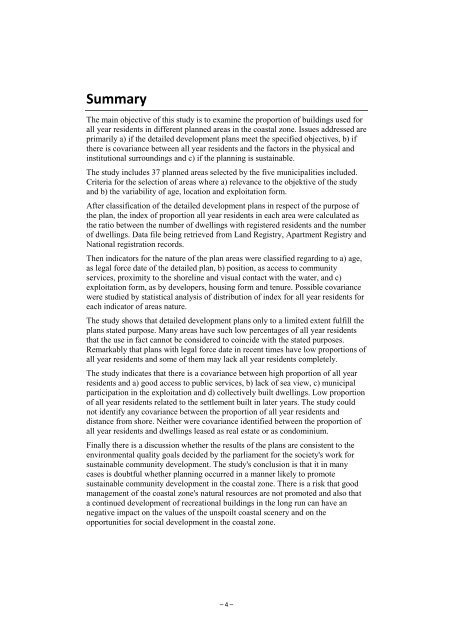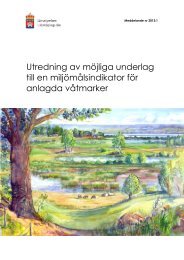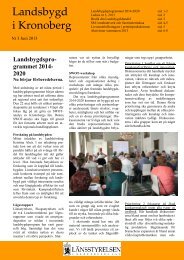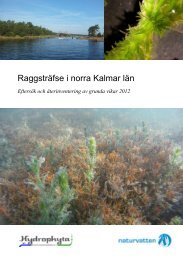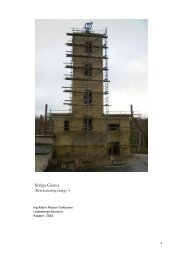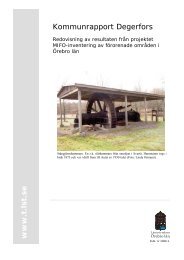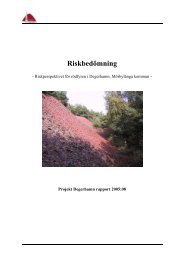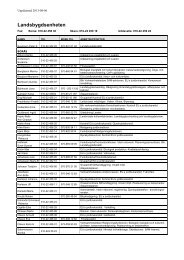Helårs- eller fritidsboende - Länsstyrelserna
Helårs- eller fritidsboende - Länsstyrelserna
Helårs- eller fritidsboende - Länsstyrelserna
You also want an ePaper? Increase the reach of your titles
YUMPU automatically turns print PDFs into web optimized ePapers that Google loves.
Summary<br />
The main objective of this study is to examine the proportion of buildings used for<br />
all year residents in different planned areas in the coastal zone. Issues addressed are<br />
primarily a) if the detailed development plans meet the specified objectives, b) if<br />
there is covariance between all year residents and the factors in the physical and<br />
institutional surroundings and c) if the planning is sustainable.<br />
The study includes 37 planned areas selected by the five municipalities included.<br />
Criteria for the selection of areas where a) relevance to the objektive of the study<br />
and b) the variability of age, location and exploitation form.<br />
After classification of the detailed development plans in respect of the purpose of<br />
the plan, the index of proportion all year residents in each area were calculated as<br />
the ratio between the number of dwellings with registered residents and the number<br />
of dwellings. Data file being retrieved from Land Registry, Apartment Registry and<br />
National registration records.<br />
Then indicators for the nature of the plan areas were classified regarding to a) age,<br />
as legal force date of the detailed plan, b) position, as access to community<br />
services, proximity to the shoreline and visual contact with the water, and c)<br />
exploitation form, as by developers, housing form and tenure. Possible covariance<br />
were studied by statistical analysis of distribution of index for all year residents for<br />
each indicator of areas nature.<br />
The study shows that detailed development plans only to a limited extent fulfill the<br />
plans stated purpose. Many areas have such low percentages of all year residents<br />
that the use in fact cannot be considered to coincide with the stated purposes.<br />
Remarkably that plans with legal force date in recent times have low proportions of<br />
all year residents and some of them may lack all year residents completely.<br />
The study indicates that there is a covariance between high proportion of all year<br />
residents and a) good access to public services, b) lack of sea view, c) municipal<br />
participation in the exploitation and d) collectively built dwellings. Low proportion<br />
of all year residents related to the settlement built in later years. The study could<br />
not identify any covariance between the proportion of all year residents and<br />
distance from shore. Neither were covariance identified between the proportion of<br />
all year residents and dwellings leased as real estate or as condominium.<br />
Finally there is a discussion whether the results of the plans are consistent to the<br />
environmental quality goals decided by the parliament for the society's work for<br />
sustainable community development. The study's conclusion is that it in many<br />
cases is doubtful whether planning occurred in a manner likely to promote<br />
sustainable community development in the coastal zone. There is a risk that good<br />
management of the coastal zone's natural resources are not promoted and also that<br />
a continued development of recreational buildings in the long run can have an<br />
negative impact on the values of the unspoilt coastal scenery and on the<br />
opportunities for social development in the coastal zone.<br />
– 4 –


